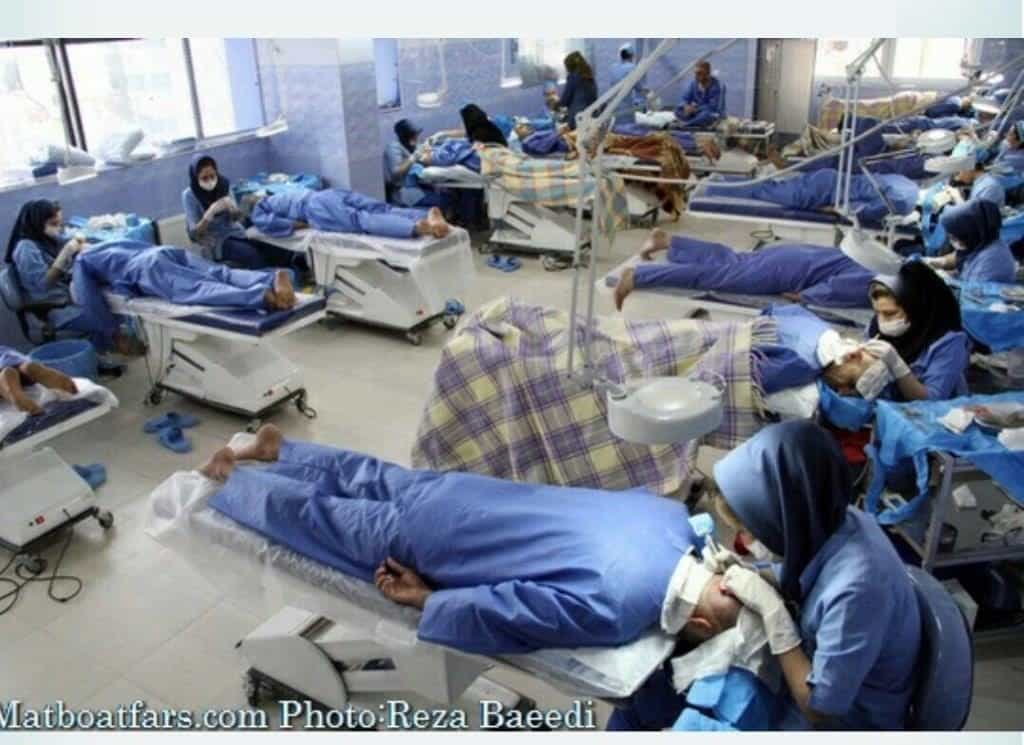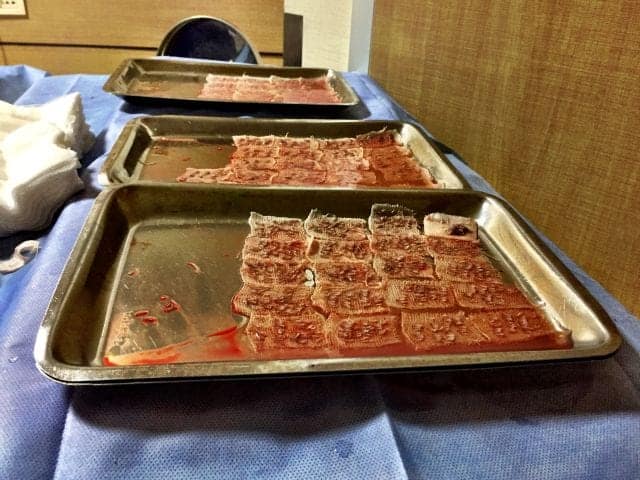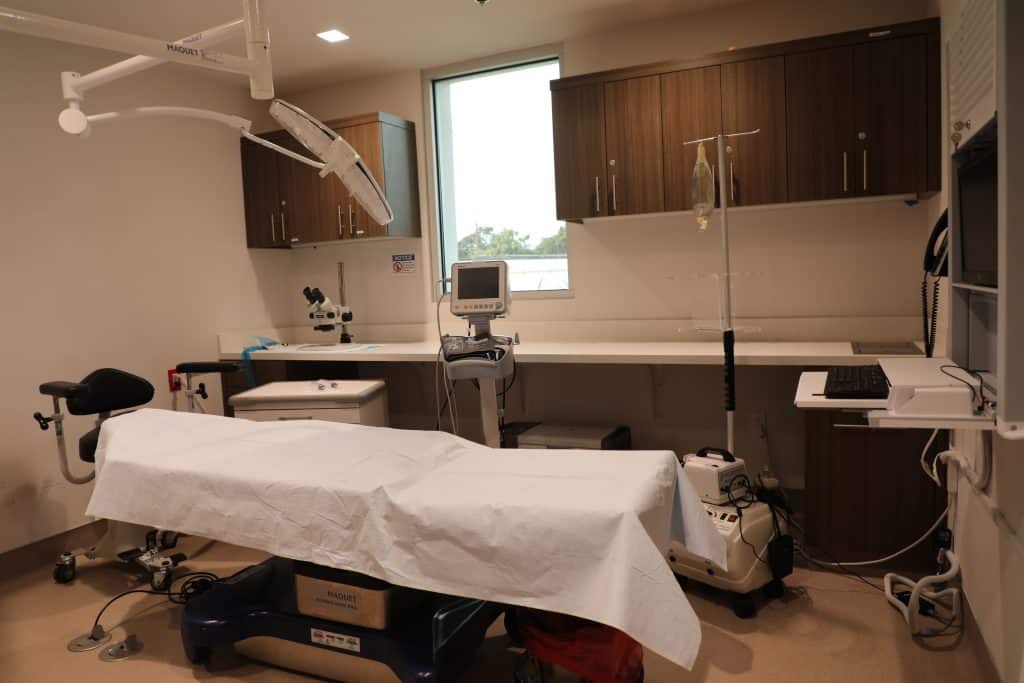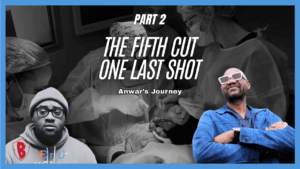Hair transplants are generally not regarded as life-threatening. However, it is influenced by the surgeon and clinic’s ability to create safe patient conditions. For example, according to many practitioners, general anesthesia, as opposed to local anesthesia, raises the risk of death due to anesthesia complications [1]. Furthermore, general anesthesia places a tighter time limit within which the surgery must be completed. This adds a rush element to the entire surgery, increasing susceptibility to mistakes.
Another significant contributing factor to hair transplantation complications is the number of donor grafts targeted for harvesting. Most clinics agree that 3000 is the maximum number of hair transplant grafts that should be extracted and inserted in one day. However, in 2019, a businessman in India died after insisting that his surgeon transplants 9250 grafts in one day.
This article will look closely at the risk factors that could increase the likelihood of dying from a hair restoration procedure.
Hair Transplant Deaths: The Changes of Dying From a Hair Restoration Surgery: Even though it’s a cosmetic procedure, A hair transplant surgery is still a medical procedure that carries real risks. In the scheme of medical procedures, a hair transplant performed to standard relatively carries minimal risks. However, these risks can escalate if you choose an unqualified doctor or clinic—including hair transplant deaths. To save a quick buck, many hair loss sufferers trek to developing countries for cheaper hair transplant surgeries. However, due to lax or absence of regulations, in these countries, often, many clinics practice illegally.
Furthermore, some clinics “bait-and-switch” their customers, whereby the patient is first seduced by the doctor’s credentials, only to have unlicensed doctor’s assistants coming in to perform the actual surgery. Thus increasing the risk of complications for the patient.
Hair transplants are medical procedures that require the highest standard of care and attention. Therefore it’s essential to protect yourself from practitioners who fail to treat the process with the degree of patience and detail required. In addition, the patient must exercise due diligence and take responsibility for the facility and doctor in whose hands they place their lives.


How to Prevent Hair Transplant Complications: Hair Transplant Deaths
If you’re traveling abroad for a hair transplant, it is crucial to keep yourself informed of the procedure’s details:
- First of all, check to ensure that the entire staff is certified to execute their respective roles in your procedure, with Doctors doing doctors’ work and medical assistants doing what falls within the jurisdiction of a medical assistant. Next, check if unlicensed personnel will make incisions or harvest grafts during the surgery.
- Are all parties involved in the surgery covered by malpractice insurance?
- Next, ask if the operating room is up to standard.
- Verify if the certified personnel will monitor you throughout the procedure and if all personnel will be working under the supervision of a person licensed by the state medical board to perform surgery.
- Confirm that the procedure will be attended by certified personnel in basic life support – BLS and Advanced Cardiac Life Support.
- Find out what type of anesthesia would be used on you
- Find out what medications would be administered during the surgery and verify your allergy / adverse reaction statuses as regards those
- Have they invested in cardiac monitors that should be used during your surgery to monitor vital parameters like blood pressure, pulses, oxygen saturation, etc., during the procedure?
Hair Transplant Risks: Red Flags
Patients should be on the lookout for red flags that should call for a reassessment of the decision to proceed with a clinic or doctor for a hair transplant procedure:
- Be sure to provide the doctor with a detailed medical history before the procedure. The medical history/record should include a thorough summary of all medications and allergies. Patients should consider it a red flag if a clinic does not have a protocol that captures the detailed past medical history, including medication use history and allergies.
- Patients should avoid clinics trying to get them to undergo surgery after a minimal clerkship period. A red flag would be having surgery within 24 hours of contacting a clinic.
- Avoid clinics that do not have a clear post-surgery care protocol in place. Be aware that a hair transplant is half the process. A substantial part of it comes after the surgery.
Check our patient result page!
Hair Transplant Deaths: General Anesthesia vs. Local Anesthesia
General anesthesia ( GA ) is a mixture of medications that will induce a loss of consciousness in a patient before surgery. When a patient is under general anesthesia, the brain does not respond to pain signals or reflexes. On the other hand, local anesthesia induces the absence of sensation in a specific body part. In local anesthesia, the person is fully awake as the anesthetic is injected into the area where numbness is desired. General anesthesia carries many risks of complications, including death. Many causes of death during surgery happen due to general anesthetic complications rather than the actual surgery. For these reasons, GA should be reserved for major surgeries where it is necessary to render the patient unconscious. Hair transplantation is not such a major surgery. It is an esthetic surgery that can be performed completely using local anesthetics alone.
Dangers of General Anesthesia in Hair Transplantation Procedures:
General anesthesia is detrimental to hair transplant patients for many reasons:
- First, it increases the risk of death: General anesthesia independently carries a higher risk of death than the actual hair transplant procedure. Thus, general anesthesia in hair transplantation introduces an added and avoidable risk of death.
- It adds a rush element to the surgery: The work quality goes down because the doctor is in a rush to complete the surgery since there is a limit to the number of hours a person should be under general anesthesia. With the time limitation that GA causes independently, the surgeon has to rush to complete the surgery in the limited time window the GA imposes. When surgery is rushed, the entire team feels pressured in the operating room to perform several complex processes in a hurry. This puts the patient at risk of personnel error and lowers the quality of supervision.
In countries where general anesthesia is the norm (e.g., France and Brazil), prospective patients should be especially vigilant of their doctor’s anesthetic process before moving forward. According to Dr. U, most hair transplant deaths (mostly unreported) he has heard of have happened because of general anesthesia complications (GA) and not the procedure itself.

Hair Transplant Death In The News
A recent news headline reiterates the importance of checking the credentials of your hair transplant provider. The India Times reported that Santosh Kumar, a final-year medical student in India, died after a hair transplant at a salon in 2016. According to reports, an allergic reaction to the anesthetic used during the procedure led to his death. The News Minute later found that the center was not a medical facility and only had a license for haircutting and styling. They are not licensed to perform hair transplantation or any other medical procedure.
Something That Really Happened
In 2019, 43-year-old businessman Shrawan Kumar Chaudhary in India died after a hair transplant procedure that exceeded the safe number of grafts recommended in one sitting. According to Dr. Umar, considering all factors, including safety and the ability to properly monitor all activities and personnel involved in a hair transplant procedure, the number of grafts to be performed in one sitting should not exceed 3,000 grafts in one day. In the instance of Mr. Chaudhary, the clinic reports that the patient requested 9,000 grafts instead in one sitting. “Patients often try to pressure doctors to cover large areas in one sitting. According to Dr. U, succumbing to such pressure would mean rushing through the procedure and bringing in numerous personnel to all work on one case simultaneously. “There are unwanted consequences of having a myriad of people all working at the same time,” Dr. Umar added:
- The supervision of each activity suffers.
- There is a multiplier effect of increased complication risk of each process. For instance, many people might inject a local anesthetic simultaneously in different body areas, leading to toxic dosing. In addition, poor supervision can increase the chance of mistakes by some personnel being overlooked.
Commenting on the incident, “We do not plan more than 2,500-3,000 grafts in one sitting and ensure it is completed in 6-8 hours. Prolonged time and extended anesthesia can compound problems,” an Association of Aesthetic Plastic Surgeons spokesperson told The India Times.
The Most Common Causes of Death From a Hair Transplant
The most common cause of death in hair transplantation are:
- The use of general anesthesia.
- Reaction to medications.
- Operation by unlicensed and unqualified personnel.
In summary, if you are contemplating hair transplantation, do your homework and consider the serious nature of the medical procedure you are about to undertake with the complete understanding that you are entrusting your looks and your survival into the hands of the doctor and clinic you choose.
BOOK YOUR FREE CONSULTATION!
Reference
- Kerure, Amit S, and Narendra Patwardhan. “Complications in Hair Transplantation.” Journal of cutaneous and aesthetic surgery vol. 11,4 (2018): 182-189. doi:10.4103/JCAS.JCAS_125_18
Further reading




